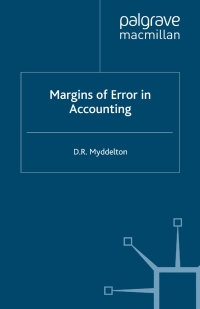Question
1. Judgment is involved in determining whether a trademark is classified as finite-lived or indefinite-lived. True False 2. In certain situations, goodwill is treated as
1. Judgment is involved in determining whether a trademark is classified as finite-lived or indefinite-lived.
True
False
2. In certain situations, goodwill is treated as a finite-lived intangible.
True
False
3. Firms determine whether to use the lower-of-cost-or-market or the lower-of-cost-or-net-realizable-value based on the type of inventory that they hold.
True
False
4If a company plans to construct a building on a plot of a land to use as a manufacturing center within the next 5 years, the firm should record the land as Property, Plant, and Equipment.
True
False
5If the net book value of Property, Plant, and Equipment exceeds the fair value of that asset, impairment is recognized.
True
False
6Goodwill can be treated as a current asset.
True
False
7If a firm incurs a cost that increases the economic output of a machine, the company should record this expenditure as an asset, rather than an expense.
True
False
8If an asset is in still in service, a firm must recognize depreciation expense related to that asset.
True
False
9All intangibles must be evaluated for impairment on an annual basis.
True
False
10Under the lower-of-cost-or-market, the market cost should never exceed the net realizable value of inventory less expected profit margin.
True
False
Step by Step Solution
There are 3 Steps involved in it
Step: 1

Get Instant Access to Expert-Tailored Solutions
See step-by-step solutions with expert insights and AI powered tools for academic success
Step: 2

Step: 3

Ace Your Homework with AI
Get the answers you need in no time with our AI-driven, step-by-step assistance
Get Started


